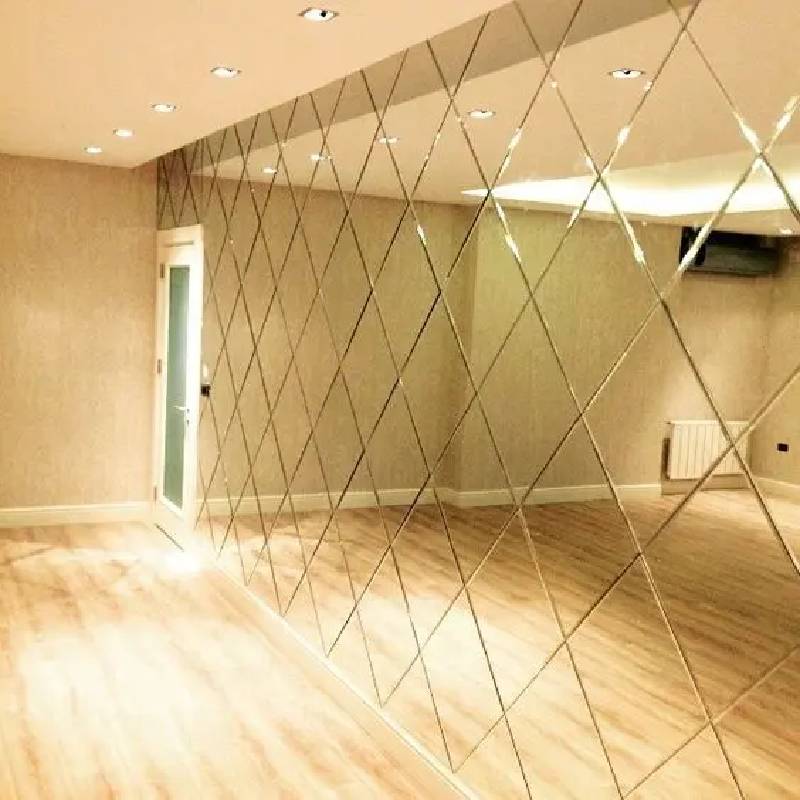The Process and Significance of Tempered Glass Manufacturing Plants
Tempered glass, also known as toughened glass, has become a staple in modern architecture and design due to its superior strength and safety features. The manufacturing of tempered glass is a precise and technical process, which is carried out in specialized plants dedicated to ensuring high-quality output. This article explores the key aspects of tempered glass manufacturing plants, the processes involved, and their significance in today's world.
The Science Behind Tempered Glass
Tempered glass is produced by heating regular glass to extremely high temperatures—typically between 600 to 620 degrees Celsius—and then rapidly cooling it. This thermal treatment increases its strength, making it five to ten times more resistant to breakage than untreated glass. In addition to enhanced strength, tempered glass shatters into small, blunt pieces when broken, greatly reducing the risk of injury.
The Manufacturing Process
The process of manufacturing tempered glass begins with the selection of raw materials. High-quality silica sand, soda ash, and limestone are typically used to form glass. These materials are melted together in a furnace at temperatures exceeding 1,500 degrees Celsius. The molten glass is then shaped into sheets or specific designs through various methods such as floating, molding, or pressing.
Once the glass sheets are formed, they undergo the thermal tempering process. The sheets are first preheated and then transferred to a furnace where they are heated to the required temperature. After reaching the desired heat, the glass is rapidly cooled using air jets—a process known as quenching. This rapid cooling process creates compressive stresses on the surface of the glass while tensile stresses are formed inside, resulting in the glass's increased strength.
Quality Control and Safety Standards
tempered glass manufacturing plant
Tempered glass manufacturing plants adopt strict quality control measures to ensure the final product meets safety and performance standards. These measures often include visual inspections, thickness measurements, and stress tests. Additionally, plants must adhere to various national and international safety regulations, such as those set forth by the American National Standards Institute (ANSI) and the ASTM International standards.
The emphasis on quality and safety is crucial, especially in applications such as facades, skylights, and shower doors, where the glass must withstand environmental stresses without compromising safety. Non-compliance with these standards can lead to catastrophic failures and injury, making quality assurance a top priority in the manufacturing process.
The Importance of Tempered Glass in Modern Society
The applications of tempered glass are vast, including residential, commercial, and automotive uses. Its durability and safety features make it an ideal choice for a variety of applications, particularly in high-traffic areas or locations susceptible to impacts, like schools and public buildings. Furthermore, tempered glass is increasingly used in energy-efficient designs, contributing to sustainable architecture by allowing natural light while providing insulation.
Moreover, with the advancement of technology, tempered glass manufacturing has evolved, integrating smart technologies, such as self-cleaning and energy-generating functionalities. These innovations not only enhance the aesthetic appeal of buildings and vehicles but also contribute to reducing energy consumption and environmental impact.
Conclusion
In conclusion, tempered glass manufacturing plants play a critical role in producing a material that is essential to modern infrastructural design and safety. From its complex manufacturing process to its adherence to rigorous safety standards, the industry is committed to delivering high-quality products that meet the diverse needs of consumers. As technology continues to advance, the potential for tempered glass to create safer, more sustainable living and working environments will undoubtedly expand, making these manufacturing plants more significant than ever in our evolving world.
 Afrikaans
Afrikaans  Albanian
Albanian  Amharic
Amharic  Arabic
Arabic  Armenian
Armenian  Azerbaijani
Azerbaijani  Basque
Basque  Belarusian
Belarusian  Bengali
Bengali  Bosnian
Bosnian  Bulgarian
Bulgarian  Catalan
Catalan  Cebuano
Cebuano  Corsican
Corsican  Croatian
Croatian  Czech
Czech  Danish
Danish  Dutch
Dutch  English
English  Esperanto
Esperanto  Estonian
Estonian  Finnish
Finnish  French
French  Frisian
Frisian  Galician
Galician  Georgian
Georgian  German
German  Greek
Greek  Gujarati
Gujarati  Haitian Creole
Haitian Creole  hausa
hausa  hawaiian
hawaiian  Hebrew
Hebrew  Hindi
Hindi  Miao
Miao  Hungarian
Hungarian  Icelandic
Icelandic  igbo
igbo  Indonesian
Indonesian  irish
irish  Italian
Italian  Japanese
Japanese  Javanese
Javanese  Kannada
Kannada  kazakh
kazakh  Khmer
Khmer  Rwandese
Rwandese  Korean
Korean  Kurdish
Kurdish  Kyrgyz
Kyrgyz  Lao
Lao  Latin
Latin  Latvian
Latvian  Lithuanian
Lithuanian  Luxembourgish
Luxembourgish  Macedonian
Macedonian  Malgashi
Malgashi  Malay
Malay  Malayalam
Malayalam  Maltese
Maltese  Maori
Maori  Marathi
Marathi  Mongolian
Mongolian  Myanmar
Myanmar  Nepali
Nepali  Norwegian
Norwegian  Norwegian
Norwegian  Occitan
Occitan  Pashto
Pashto  Persian
Persian  Polish
Polish  Portuguese
Portuguese  Punjabi
Punjabi  Romanian
Romanian  Russian
Russian  Samoan
Samoan  Scottish Gaelic
Scottish Gaelic  Serbian
Serbian  Sesotho
Sesotho  Shona
Shona  Sindhi
Sindhi  Sinhala
Sinhala  Slovak
Slovak  Slovenian
Slovenian  Somali
Somali  Spanish
Spanish  Sundanese
Sundanese  Swahili
Swahili  Swedish
Swedish  Tagalog
Tagalog  Tajik
Tajik  Tamil
Tamil  Tatar
Tatar  Telugu
Telugu  Thai
Thai  Turkish
Turkish  Turkmen
Turkmen  Ukrainian
Ukrainian  Urdu
Urdu  Uighur
Uighur  Uzbek
Uzbek  Vietnamese
Vietnamese  Welsh
Welsh  Bantu
Bantu  Yiddish
Yiddish  Yoruba
Yoruba  Zulu
Zulu 

